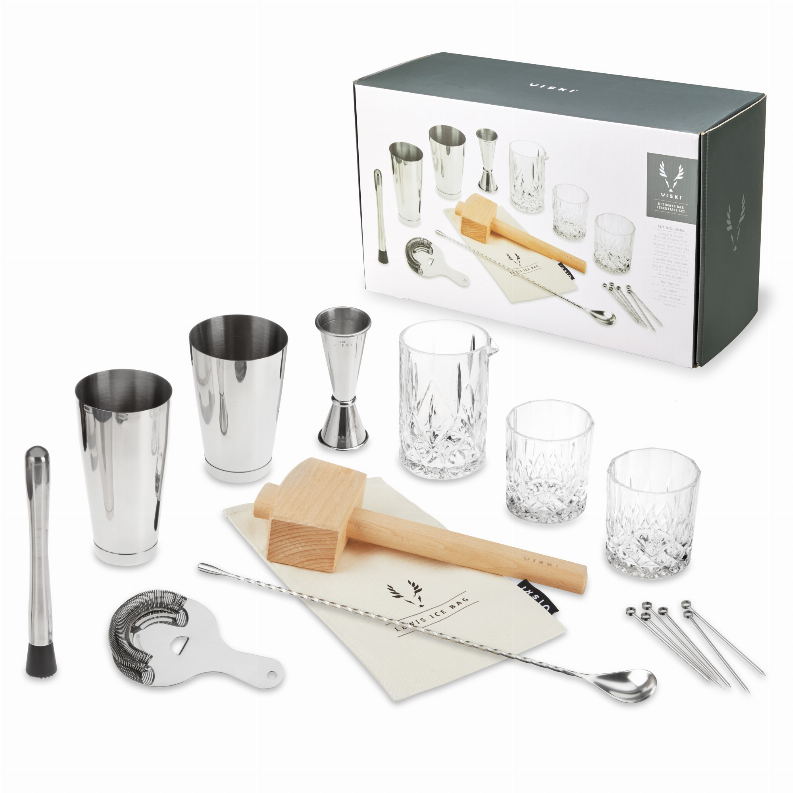Introduction:
The art of mixing drinks has been around for centuries, and alongside it, the tools of the trade have undergone a remarkable transformation. Today's sleek cocktail shakers and precisely engineered jiggers are a far cry from their historical counterparts. Join us on a journey through time as we explore the fascinating evolution of barware design.
1. The Early Days: Punch Bowls and Communal Drinking
In the 17th and 18th centuries, punch was the drink of choice for social gatherings. Large, ornate punch bowls were the centerpiece of any party, often made from silver, ceramic, or glass. These bowls were accompanied by ladles and cups, marking the beginnings of specialized barware.
2. The Birth of the Cocktail Era
The early 19th century saw the rise of the cocktail, bringing with it a need for new tools. The first cocktail shakers appeared, initially repurposed from other kitchen items. By the 1840s, purpose-built bar tools began to emerge, including basic versions of jiggers and muddlers.
3. The Golden Age of Barware: Art Deco and Beyond
The Prohibition era paradoxically spurred innovation in barware design. Speakeasies needed compact, easily concealed tools, leading to collapsible shakers and multi-purpose devices. Post-Prohibition, the Art Deco movement heavily influenced barware aesthetics, with sleek lines and geometric patterns adorning shakers and serving sets.
4. Mid-Century Modern and the Home Bar Boom
The 1950s and 60s saw a surge in home entertaining, popularizing bar carts and elaborate barware sets. Designers embraced new materials like Bakelite and stainless steel, creating pieces that were both functional and decorative.
5. The Craft Cocktail Renaissance
The late 20th century cocktail revival brought a renewed focus on precision and technique. This led to innovations like the Hawthorne strainer, refined jiggers with multiple measurement options, and ergonomically designed bar spoons.
6. Contemporary Barware: Where Form Meets Function
Today's barware combines aesthetics with cutting-edge functionality. We see temperature-regulating glasses, smoke infusers, and molecular mixology tools. Sustainability is also a growing concern, with eco-friendly materials and reusable alternatives to single-use items gaining popularity.
Conclusion:
From communal punch bowls to high-tech cocktail gadgets, barware design has always reflected the drinking culture of its time. As we raise a glass to the ingenuity of past and present designers, we can only imagine what innovations the future holds for the world of mixology.
Would you like me to expand on any particular section of this blog post or add more specific details about certain barware items?


